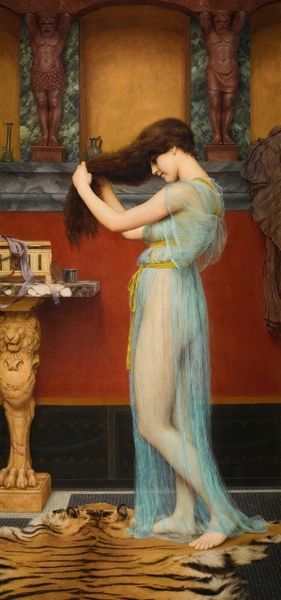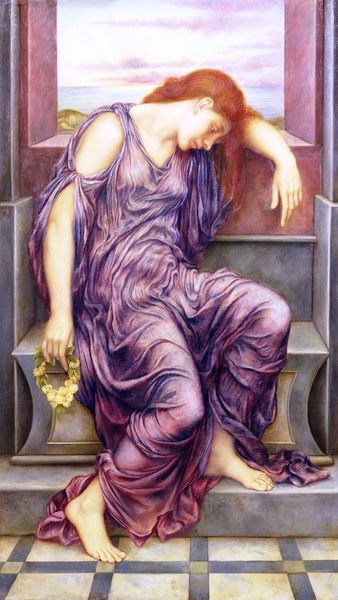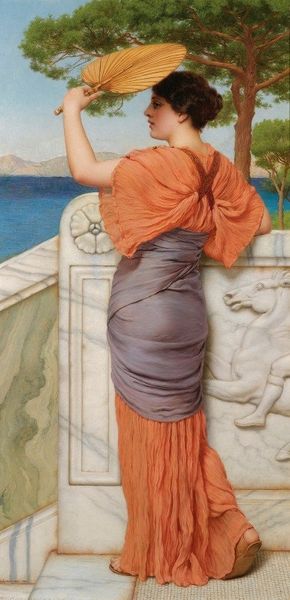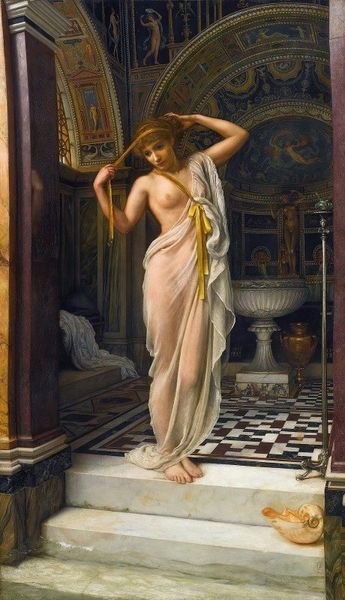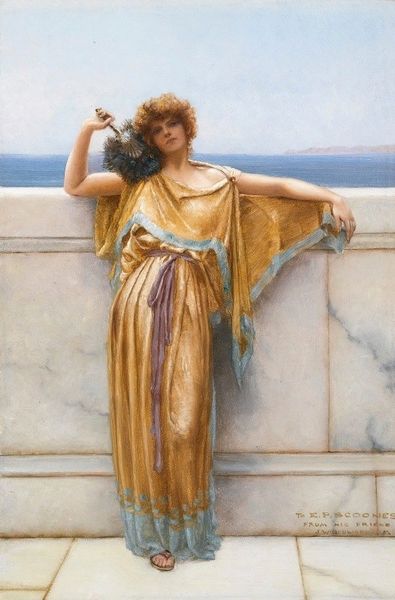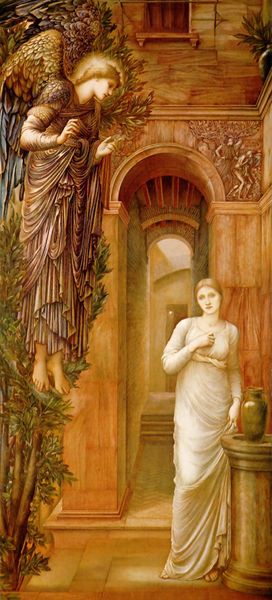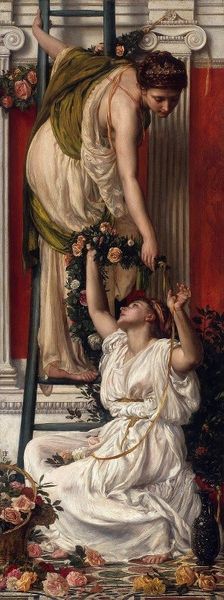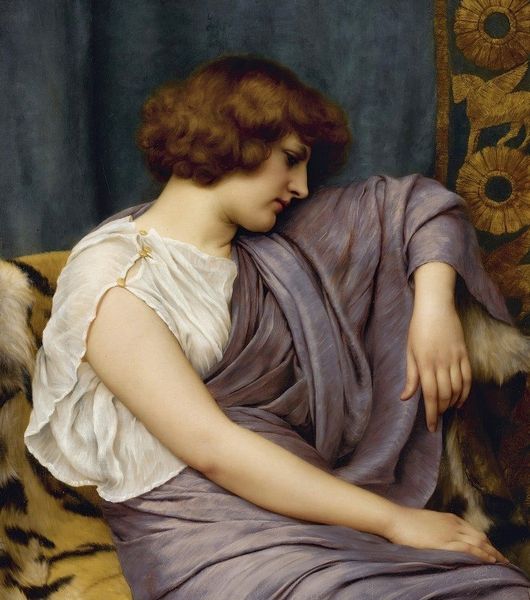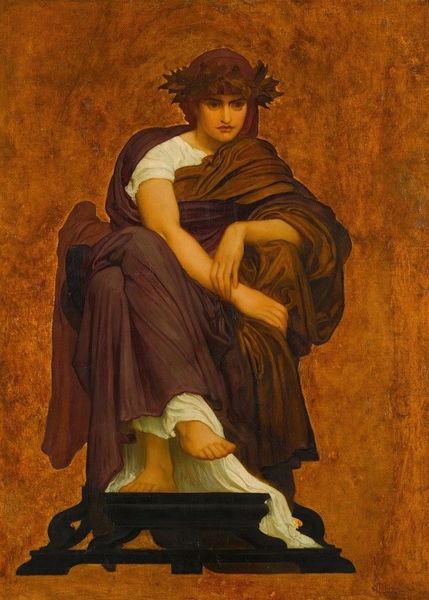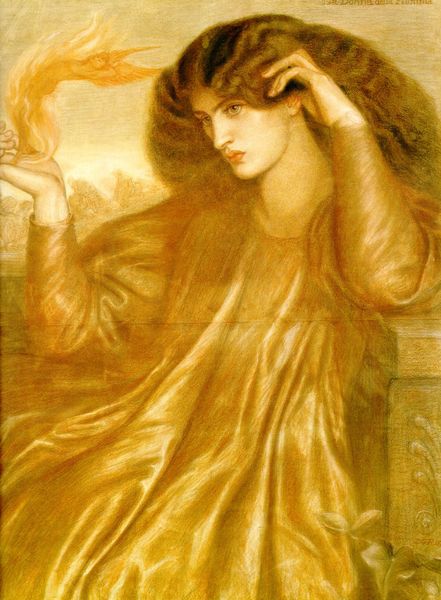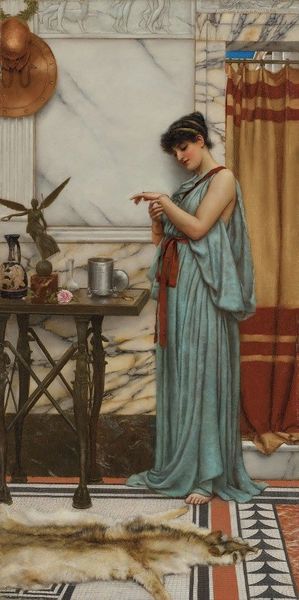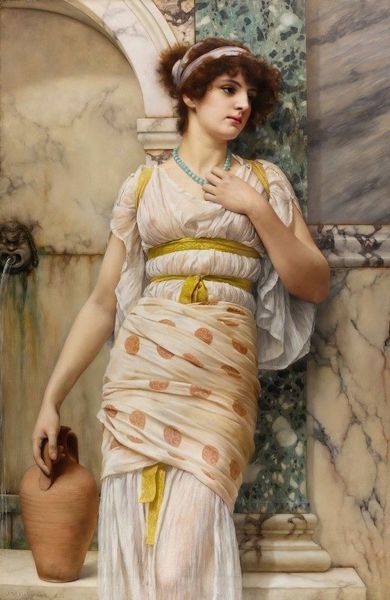
Copyright: Public Domain: Artvee
Curator: Frederic Leighton's "Lieder ohne Worte", completed in 1861 using oil paint, offers us a glimpse into a very specific aesthetic of the mid-19th century. Editor: My first impression is one of languid melancholy. The color palette is muted, creating a pensive atmosphere. The woman's posture communicates weariness, almost a graceful defeat. Curator: Indeed, and we must remember that Leighton’s depictions often draw on classical and historical references. This wasn’t simply about aesthetic beauty; he situated his figures within narratives both personal and allegorical. We see echoes of academic art and a clear nod towards romanticism here. Editor: And I see a young woman almost imprisoned by the male gaze of Leighton’s era. While she is undeniably beautiful, her downcast eyes and posture suggest a kind of submission. I think it's interesting to examine how depictions of women in art were intertwined with notions of Victorian morality. What do you see within the social and cultural landscape of that period? Curator: That’s a potent observation. Leighton occupied a unique position, becoming a prominent figure in the Royal Academy and later ennobled, all within the evolving museum and gallery system that actively shaped artistic production. He catered to a particular vision, arguably perpetuating societal power structures through these romanticized, classical forms. How does situating this work within Victorian ideals impact your interpretation? Editor: I think it raises questions about the power dynamics inherent in the creation and reception of art, especially regarding the representation of women. While the painting appears to celebrate feminine beauty, it also subtly reinforces restrictive gender roles. Her lack of agency within the narrative becomes even more prominent. Curator: Absolutely. The painting's title, "Lieder ohne Worte"—Songs Without Words—hints at a deeper story, one that's perhaps left unsaid or inaccessible to us without understanding these intricate historical and social contexts. This interplay is what continues to captivate viewers, prompting conversations about beauty, power, and representation. Editor: Right. We can consider how the artwork actively participates in the on-going discourses about agency and artistic representation through time. Hopefully, viewers can draw conclusions to fuel progressive change within modern power structures.
Comments
No comments
Be the first to comment and join the conversation on the ultimate creative platform.
